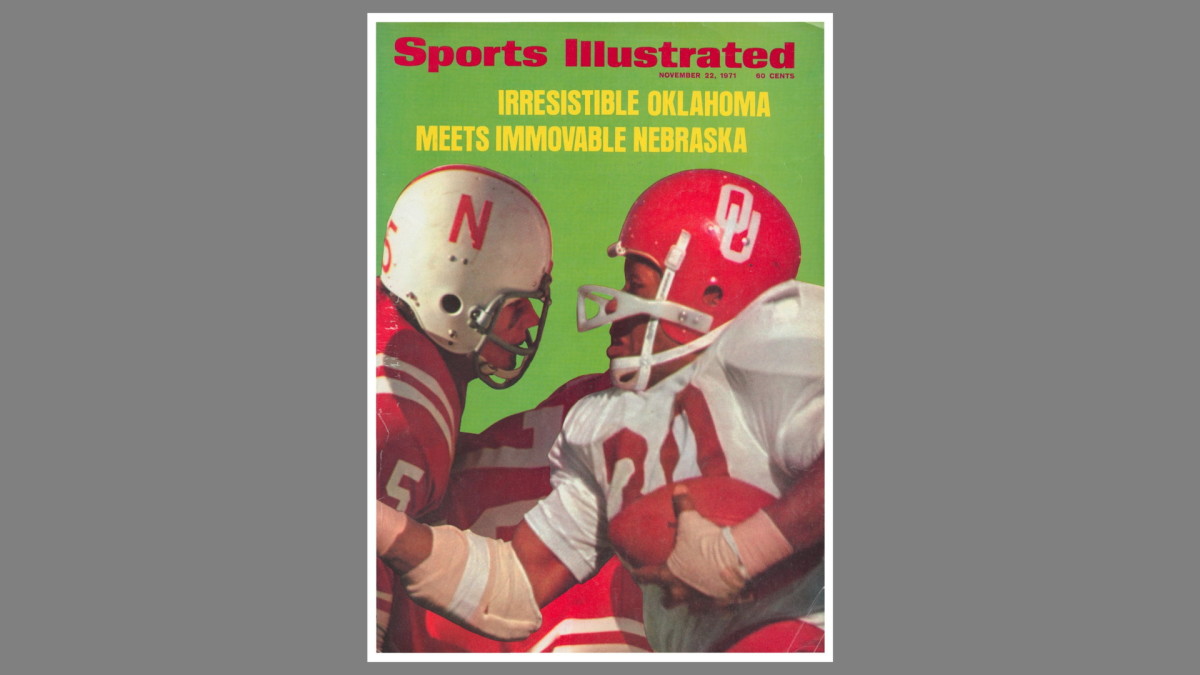

This is the first of a three-part series about the 1971 Nebraska-Oklahoma Game of the Century. In Part I, we’ll look at the buildup to that classic showdown between #1 Nebraska and #2 Oklahoma.
Part One: The Buildup
Nov. 25 will mark the 50th anniversary of the Game of the Century. And on Saturday Sept. 18, these two football programs will meet once again in Norman, Oklahoma, to honor the memory of that classic game played on Thanksgiving Day in 1971.
People who don’t know much about the history of Husker football should begin their journey by studying this classic. Unlike any game before or since, this contest showed the true heart and soul of Cornhusker football.
Like most Husker fans who were old enough to have experienced that game, you probably know exactly where you were, what you were doing, where you were living and remember most everything about the events surrounding that memorable day.
In my opinion, the game between Nebraska and Oklahoma was singular for several reasons:
1) This was the greatest game in Husker football history.
2) The game had the most iconic play in Husker football history. (Johnny Rodgers’ 72-yard TD punt return)
3) Rodgers was the most exciting player in Nebraska history and maybe in the history of college football.
4) KFAB’s Lyell Bremser’s radio call of Rodgers’ return is the most iconic in Husker football history.
5) The win cleared the way for Nebraska’s second straight national championship. Nebraska went on to dismantle a great Alabama team 38-6 in the Orange Bowl to earn the Huskers their first outright national championship. (The year before, Nebraska had to share the national championship with the Texas Longhorns.)
If you are a Husker fan and have your own memories of that game, or if you’re a fan who wasn’t born yet and don’t have your own memories, this story is for you.
Two freight trains
Husker and Sooner fans had the date Thursday, Nov. 25, 1971, circled on their calendars since the year before when Nebraska narrowly beat the Sooners in Lincoln, 28-21. Everyone knew the winner of the 1971 game was a sure bet to win the national championship that year. And they were right.
Oklahoma led the nation in total offense and the Huskers led the nation in total defense. Something had to give.
Let’s look at both teams.
Oklahoma Sooners
Head coach: Chuck Fairbanks. Coming into the game, the Sooners had won national championships under former head coach Bud Wilkinson in ’50, ’55 and ’56. And in 1967, OU defensive backs assistant coach Chuck Fairbanks was named the Sooners’ new head coach.
The wishbone
Fairbanks’ 1970 team, running the I-formation offense at the beginning of the year, finished the season at 7-4. But just before their annual shootout with Texas, OU offensive coordinator, Barry Switzer, convinced Fairbanks to install the relatively new wishbone offense. Alabama and Texas had been using it successfully for several years prior.
How did Switzer’s new offense fare in its debut? Not too well. The Sooners were thrashed by the Longhorns 41-9 in ’70. But gradually, the new offense kicked in for Oklahoma. After the loss to Texas, the Sooners went 4-3-1, including a 21-28 loss at Nebraska. The Sooner record with the wishbone wasn’t eye popping, but it was clear that the new offense was going to prove to be perfectly suited for OU’s personnel for years to come.
Sooner season
In 1971, Oklahoma started the year on a nine game win streak that led up to the Nebraska game. OU smashed Pittsburgh 55-29, beat #17 USC 33-20, downed #3 Texas 48-27 and got a 45-17 win over #6 Colorado. Oklahoma also smoked Kansas State, 75-28 and Kansas 56-10. The Sooners’ new offense produced some scary numbers: The Sooners averaged 44.6 points per game and won their games by an average of 28.8 points. They also averaged 563 yards a game in total offense with a per game rushing average of 472 yards. Those were jaw-dropping numbers even by today’s standards.
Sooner team
The Sooners were led that year by QB Jack Mildren who was later nicknamed by Sooner fans “The Godfather of the Wishbone.” Other Sooner greats who played in that game were All-American Greg Pruitt. Pruitt led the nation in rushing average that year, finishing third in the Heisman race in ’71 and second behind Nebraska’s first Heisman winner, Johnny Rodgers in ’72. Other great players for OU were All American Tom Brahaney, Leon Crosswhite, Joe Wylie, Jon Harrison and Lucious Selmon.
Now, let’s look at Nebraska.
Nebraska Cornhuskers
Head Coach: Bob Devaney. The Huskers weren’t too bad themselves leading up to the ’71 game. The year before, Nebraska won its first ever national championship in school history beating LSU in the Orange Bowl.
And coming into the game with Oklahoma, Nebraska was on a 29-game unbeaten streak that dated back to 1969. The only blemish during that time was a tie in 1970 with #3 USC. Since that tie, the Huskers were on an amazing 20 game win streak.
Wins included a victory over Oregon (34-7), Minnesota (35-7), a 36-0 drubbing of Missouri, a 55-0 shutout of Kansas and a 31-7 win over #6 Colorado. The Huskers also beat Iowa State 37-0 and Kansas State 44-17 just before setting the table for the Thanksgiving Day showdown. Leading up to the game, the Huskers were averaging almost 39 points a game and had an average winning margin of almost 33 points. Game summaries of the 1971 season are located here.
The “I” formation
In 1969 after two consecutive 6-4 seasons without a bowl game, Bob Devaney asked his offensive coordinator, Tom Osborne, to redesign the offense.
Tom Osborne, Husker OC
Tom Osborne was the Husker head coach from 1973-1997 and led the Cornhuskers to three national championships. He is also the founder of TeamMates, a school-based mentoring system that helps kids stay in school, graduate and become productive citizens. Teammates is in its 30th year of service. For more information, go to Teammates.org.
In 1968, Nebraska had lost to Oklahoma 47-0 in Lincoln. After that year, Bob (Devaney) knew changes needed to be made in our offense. And I was really surprised that he chose me to do it since I was a junior member of his coaching staff. We had been running an unbalanced line offense similar to what Michigan State ran when Bob was an assistant there under Duffy Daugherty. We installed the “I” formation because we had the personnel who could run it. And it seemed to work. The next year (’69), we went down to Norman and beat the Sooners 44-14 in one of the biggest turnarounds in Nebraska football history.
The Husker team
Nebraska had a lot of talent that year. The Huskers were led on offense by Jerry Tagge, Jeff Kinney and ’72 Heisman winner Johnny “The Jet” Rodgers. On defense, the Huskers were led by Rich Glover, Willie Harper, Bill Kosch, Larry Jacobson, John Dutton and Joe Blahak. After the ’71 season, six Husker players were chosen in the NFL draft and two years later, the Huskers had another 10 players taken. Of all the Huskers who played in that classic game, 25 went on to have careers in the NFL. Rodgers won the Heisman in ’72 and Jacobson and Glover won the Outland Trophy in ’71 and ’72 respectfully.
Next week in The Game of the Century Part II, we will hear more from the coaches and players who were part of that game. And we’ll hear from Husker fans who set aside everything that day to witness one of the greatest college football games of all time.
Follow the discussion about this article on the HuskerMax bulletin board.

Must See
-


Football
/ 2 months agoHuskers Fight Hard but Fall Short Against UCLA
LINCOLN – The Nebraska Cornhuskers gave it their all on Saturday, with standout efforts...
-
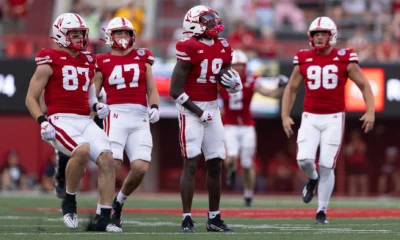

Football
/ 3 months agoGAMEDAY: Nebraska Set to Face Undefeated Indiana in Key Big Ten Showdown
Bloomington, IN – It’s Game Day, Husker Nation! Nebraska (5-1, 2-1 Big Ten) returns...
-


Football
/ 3 months agoBlackshirts Shine as Nebraska Tops Rutgers 14-7 on Homecoming
Lincoln, NE – Nebraska’s Blackshirt defense played a starring role in the Huskers’ 14-7...
By Chris
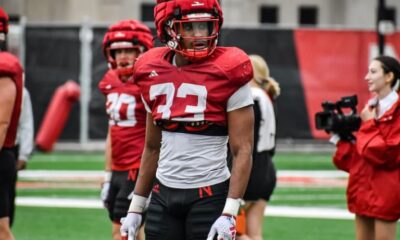

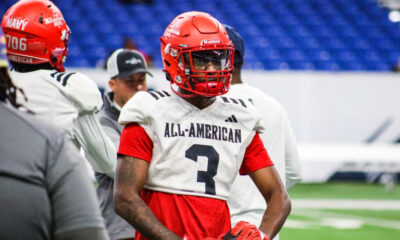

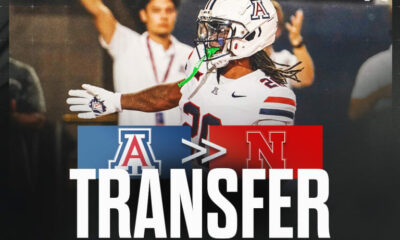

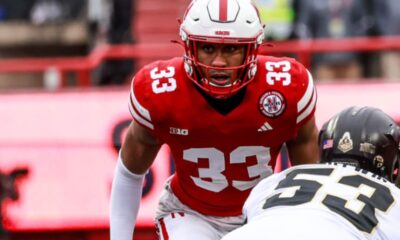

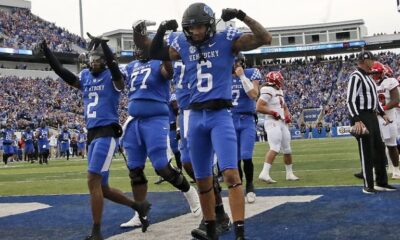

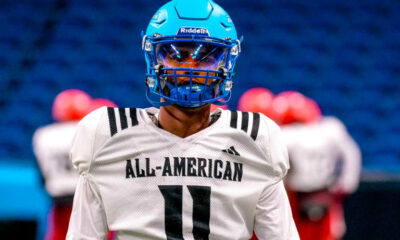

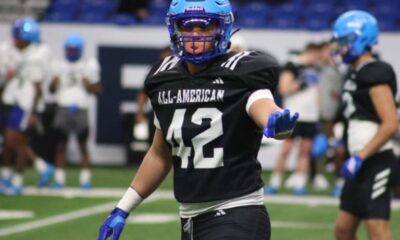

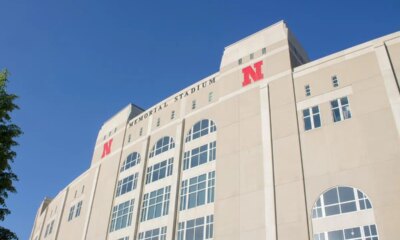

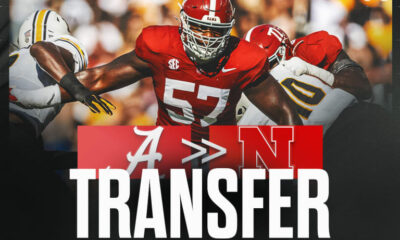





You must be logged in to post a comment Login